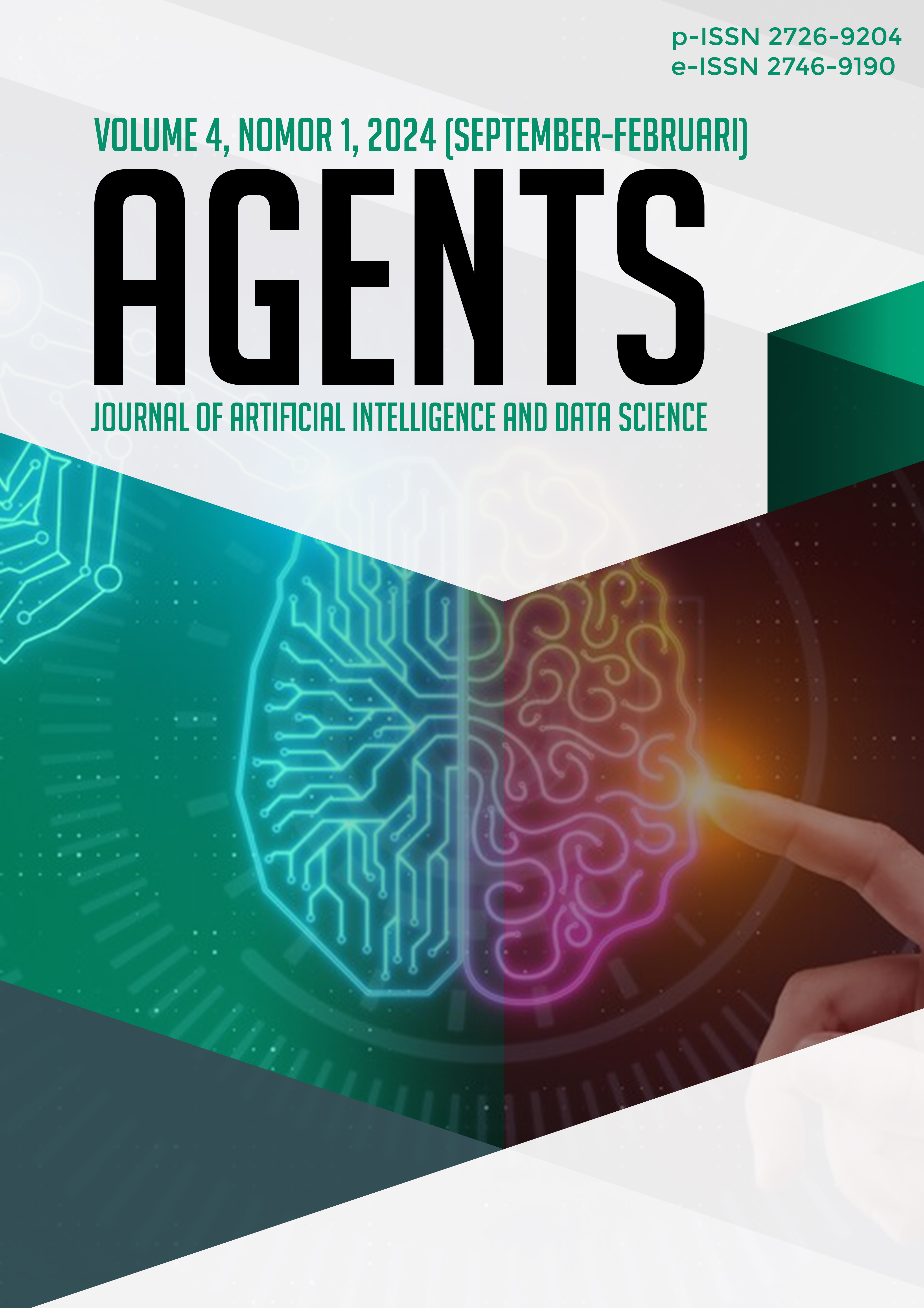Public Sentiment Analysis Towards the Implementation of 2024 Election Preparations Using the Maximum Entropy Method
##plugins.themes.academic_pro.article.main##
Abstract
The General Election Commission (KPU) and the Election Supervisory Agency (Bawaslu) are tasked with coordinating and overseeing elections throughout the territory of Indonesia. Nevertheless, elections are not without various disputes, including violations of ethical codes and administrative issues. General elections are an important way for the public to exercise their political participation rights. In the era of information technology, the public is increasingly active in expressing their opinions and sentiments through social media such as Twitter. Utilizing data from social media, the maximum entropy method is employed to classify opinions found in tweets based on entropy values. This research also aims to measure the accuracy level of the maximum entropy method in sentiment classification. From the results of this study, using approximately 1,400 data, an accuracy rate of 87.08% was obtained, which is quite good and highly feasible for further development to achieve better results
##plugins.themes.academic_pro.article.details##

This work is licensed under a Creative Commons Attribution-NonCommercial 4.0 International License.
References
- M. F. Putra, A. Herdiani, and D. Puspandari, “Analisis Pengaruh Normalisasi, TF-IDF, Pemilihan Feature-set Terhadap Klasifikasi Sentimen Menggunakan Maximum Entropy (Studi Kasus?: Grab dan Gojek),” e-Proceeding of Engineering. pp. 8520–8529, 2019.
- D. M. Liando, “Pemilu dan Partisipasi Politik Masyarakat (Studi Pada Pemilihan Anggota Legislatif Dan Pemilihan Presiden Dan Calon Wakil Presiden Di Kabupaten Minahasa Tahun 2014),” J. LPPM Bid. EkoSosBudKum, vol. 3, no. 2, pp. 14–28, 2016.
- N. M. Rahma, “Review Buku Sebuah Pembelajaran Untuk Pemilu yang Akan Datang,” J. Penelit. Polit., vol. 19, no. 1, pp. 67–72, 2022, [Online]. Available: https://ejournal.politik.lipi.go.id/
- M. Cindo and D. P. Rini, “Seminar Nasional Teknologi Komputer & Sains (SAINTEKS) Literatur Review: Metode Klasifikasi Pada Sentimen Analisis,” Januari, pp. 66–70, 2019, [Online]. Available: https://seminar-id.com/semnas-sainteks2019.html
- I. Pramudiono, “Pengantar Data Mining: Menambang Permata Pengetahuan di Gunung Data.” 2016.
- D. B. Setyohadi, F. A. Kristiawan, and E. Ernawati, “Perbaikan Performansi Klasifikasi Dengan Preprocessing Iterative Partitioning Filter Algorithm,” Telematika, vol. 14, no. 01, pp. 12–20, 2017, doi: 10.31315/telematika.v14i01.1960.
- V. Amrizal, “Penerapan Metode Term Frequency Inverse Document Frequency (Tf-Idf) Dan Cosine Similarity Pada Sistem Temu Kembali Informasi Untuk Mengetahui Syarah Hadits Berbasis Web (Studi Kasus: Hadits Shahih Bukhari-Muslim),” J. Tek. Inform., vol. 11, no. 2, pp. 149–164, 2018, doi: 10.15408/jti.v11i2.8623.
- B. Herwijayanti, D. E. Ratnawati, and L. Muflikhah, “Klasifikasi Berita Online dengan menggunakan Pembobotan TF-IDF dan Cosine Similarity,” Jurnal Pengembangan Teknologi Informasi dan Ilmu Komputer, vol. 2, no. 1. pp. 306–312, 2018. [Online]. Available: http://j-ptiik.ub.ac.id
- A. B. Alroy, P. P. Adikara, and S. Adinugroho, “Klasifikasi Hoaks Menggunakan Metode Maximum Entropy Dengan Seleksi Fitur Information Gain,” J. Pengemb. Teknol. Inf. dan Ilmu Komput., vol. 3, no. 9, pp. 9291–9298, 2019, [Online]. Available: http://j-ptiik.ub.ac.id

